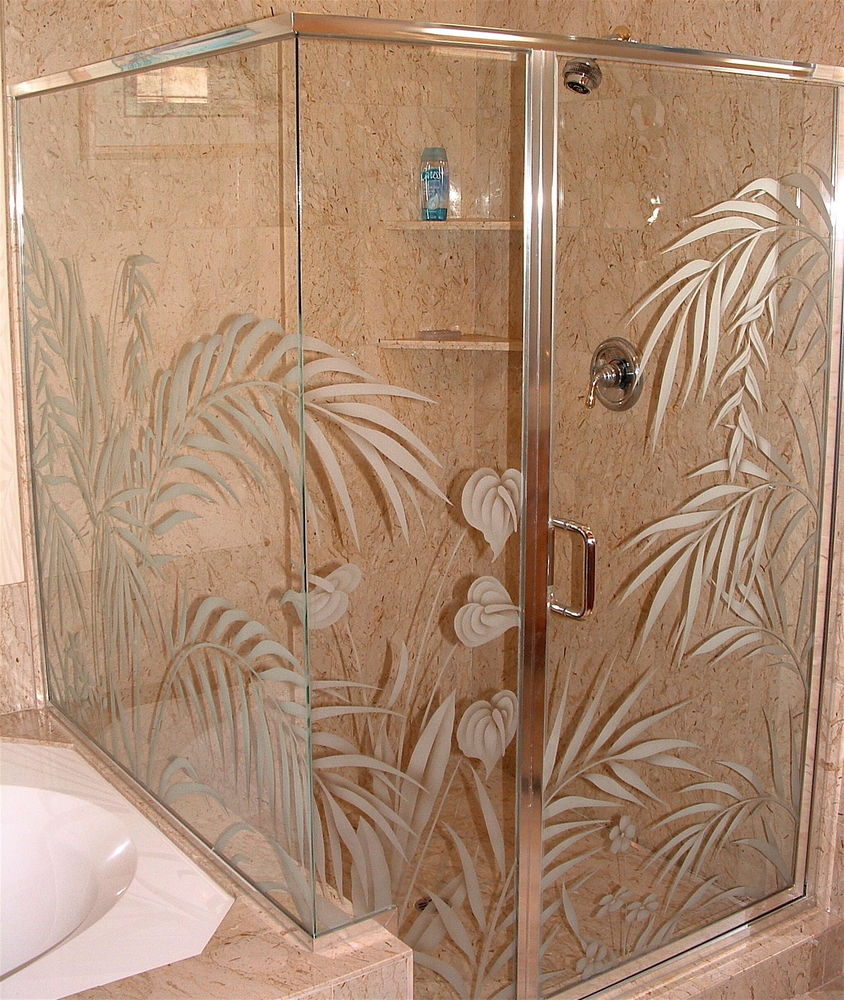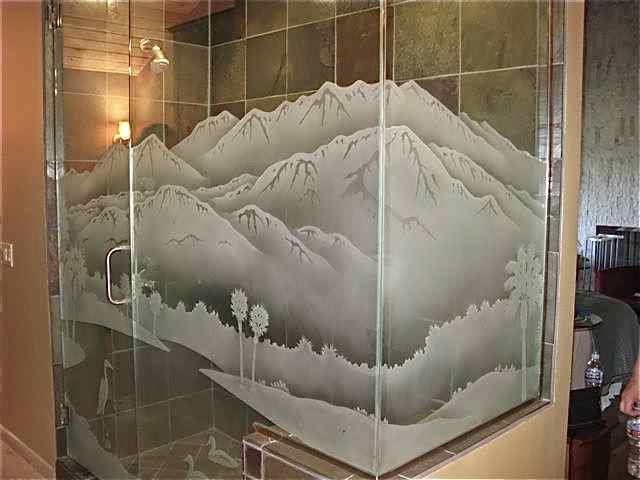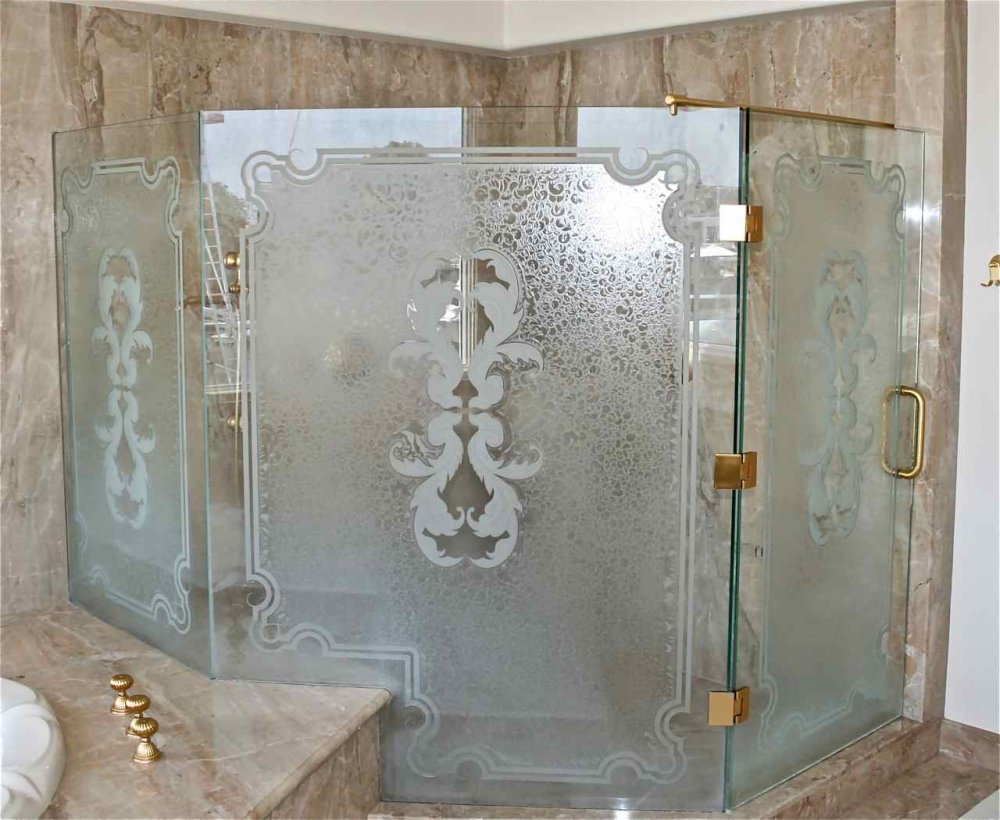Your Ultimate Guide to Custom Showers
Through the Years: History of Showers
Whether it’s in the fresh, early hours of the morning or after a long hard day of work, showering is just about an everyday necessity. But we often don’t give those frosted shower doors and little waterfalls above our heads much of a second thought. They keep our families clean, but did you know that homes haven’t always had showers in them? In fact, did you know that humans over the centuries have spent the majority of their time rinsing off in the same water they first washed off in? Yep, giant pools of filth. Every day.
You better believe that homes haven’t always had custom showers or those beautiful shower sliding doors. It has actually taken centuries (far too long) for showers to be used and even longer before people started worrying about custom showers, frameless shower doors, and other design-based items. Even when the first shower was invented, it wasn’t even part of normal house use.
With the invention of their aqueducts and sewage systems, the ancient Greeks were the first in the world to use showers. Though according to pottery and other ancient artifacts found, Egyptians and early Mesopotamian cultures used the most rudimentary showers ever — a bather would take a jug of water and pour it over their heads to rinse and wash off. Thankfully, we don’t have to worry about carrying jug after jug of water to take just one bath.
For the Greeks and Romans, most bathing rooms were built similar to modern-day locker rooms (minus the shower sliding doors). They were for communal use for several different bathers to shower at once. The bathing rooms were used by the wealthy, poor and servants alike. However, when the Roman Empire fell, so did the water systems and the use of showers unfortunately.
So we fell back into the archaic use of bathtubs. Until the last couple hundred years, bathing was done by heating and carrying buckets of water from the fire to a large tub (talk about strong arms). In the Middle Ages and Renaissance era, families would bathe with the head of the household first, down to the baby as last. By the time it was wee little Henry’s turn to be washed, the water in the tub was almost black and full of washed-off filth. In fact, the common idiom “Don’t throw the baby out with the bathwater” is believed to reference this practice — because the water was so filthy you wouldn’t be able see the the baby in the bathtub and you didn’t want to accidentally toss the baby out with the filthy water when it was time to empty the bathtub (this phrase was first recorded in 1512 in Narrenbeschwörung by Thomas Murner).
Custom shower glass and beautiful home bathing rooms didn’t just pop up out of nowhere though. For the next couple hundred years, there was the occasional invention of a shower, but none that ever stuck. But then, in 1767 William Feetham patented the first hand-pump shower in England. But as with all first bathtubs and showers during centuries before, the system recycled the already-used dirty water (also known as grey water) through for each following rinse cycle. Plus, there was no way to heat the water before showering, so don’t be surprised that Feetham’s shower didn’t catch on. Would you really want to be standing under a nozzle that was dumping dirty, freezing water all over you?
In 1810 an anonymous inventor improved Feetham’s design with the English Regency shower. This new shower system was made of metal pipes and was above 10 feet tall. A basin was suspended above the rickety metal pipes and flowed into a nozzle that would release the water from the basin, but again, already used water would be recycled back up to the basin through the pipes.
Finally, in 1850 indoor plumbing was reinvented (because honestly, the Greeks really were the first to invent it) and the English Regency shower was ultimately improved. This allowed for the free-standing showers (free-standing because they certainly didn’t have any neo angle shower door to enclose them) to finally have a fresh, renewable flow of water. However, many homes still didn’t use the new shower systems right away. But still, it wouldn’t be for several more years that frameless glass doors and shower curtains and wet rooms would even be a thing to stress about. It was almost as if bathing day in and day out in our own filth just wasn’t a big enough health worry.
It was actually the French army that picked up the use of the shower quicker than anyone else. François Merry Delabost, a doctor and inventor, saw the need for better hygiene among French troops. Previously, Delabost had showers installed at Bonne Nouvelle prison that were heated by steam engine and only used twenty liters of water per eight bathers. The system provided better hygiene and was also far more economical. This new bathing system was quickly picked up by other armies after the French, including Prussia in 1879.
Soon to follow were public bathhouses — the first in Vienna in 1887 — and boarding schools, which is no surprise since these were areas that picked up and harvested bacteria and disease far quicker than our humble abodes — due to the large amount of individuals who came in and out each day, these places saw more germs than what our homes see. By the end of the 1800s, domestic showers were finally found more often in new homes. Unlike bathtubs, showers are more hygienic and economical. Rather than staying in the same water to wash and rinse off, bathers are provided with constant, clean fresh water. (Before showers, some bathers would wash in the bathtub and then use a jug of clean water to pour over them before exiting the tub.) Along with this, showers use about 80 liters of water per shower, whereas a bath uses 150 liters per bath.
Final(ly) Innovations
Most of us are pretty familiar with modern day showers. Most homes are built with “full bath” or “half bath” rooms. A full bathroom is built with either a stall shower over bathtub or a large tub and a stall shower with frameless sliding glass shower doors next to it. A half bathroom usually only has a smaller stall shower with sliding glass shower doors or frameless glass doors. Public shower rooms are very similar to the barrack shower rooms Delabost had installed centuries ago — several shower heads in a row with either a wall or curtain (or nothing) in between. Other public showers include open, stand-alone shower heads on posts at the beach or pool for swimmers to use to rinse off before heading home.
As architecture and design have begun to skyrocket in the last couple centuries, showers in homes have also started to pick up in creativity. Many larger homes include wet rooms or home saunas. Wet rooms are bathrooms that don’t have a designated shower area or even shower glass panels. Instead, the shower head(s) are in an open, tiled room that has a floor that slopes down towards a drain. With the invention of the wet room, the need for shower door hardware is no longer a necessity and the worry over frameless shower doors cost is not longer there. In fact, wet rooms that don’t need sliding glass shower doors are almost the perfect idea for renovating a spare or guest bathroom to give your family and guests a little excitement for their everyday clean. Home saunas are connected generally connected to a guest bathroom or master bathroom and are, literally, quaint-sized steam rooms perfect for a family.
Other new shower innovations have been shower glass panels, or even frameless glass doors that enclose showers, and several different kinds of shower heads. Families can change out their default shower heads that are automatically installed in newly-built homes and replace them with top-notch massaging shower heads, rain shower heads, or even more than one shower head installed in the shower stall. You can even replace the default glass shower door hardware for something more your style or with something that will match the theme of your wash room.
Several companies have started to spring up that create custom shower glass and superior glass shower door hardware. With countless options like the neo angle shower door from Sans Soucie or the walk-in shower from Artweger, families and interior designers’ options for creating exquisite washrooms have erupted over the years.
Modern Custom Showers and Trends
On average, we will spend about 671 days of our lives in the bathroom bathing and grooming. The average person spends about eight minutes showering. If we take one shower a day (maybe two for those hotter, more humid days in July and August), we spend about 2,920 minutes cleaning ourselves off per year! If we’re spending so much time in the shower, wouldn’t it make more sense to have it be a bit more fun?
In the last 50 years or so, shower designs have become more about enjoying our time scrubbing off and saving the environment. With things like the neo angle shower door, and impressive glass shower door hardware, those cumulative 671 days of showering are no longer a mundane task.
With the sudden influx of home improvements and do-it-yourself projects storming the web, more and more families are opting out of the typical curtain enclosed domestic shower (the often-used plastic curtains can actually become a breeding area for common mold and bacteria). With so many ideas bursting across Pinterest and interior designer blogs, the amount of options and different styles for upgrading your bathroom are endless.
Many families are taking stall showers to a new level with amazing custom shower glass panels and doors. They are no longer your typical clouded glass doors and glass panels. In fact, many companies today provide stunningly unique etched-glass panels that will transform any bathroom into a magnificent paradise (and still provide privacy!). With fabulous, one-of-a-kind shower glass panels and glass shower door hardware, your bathroom can be converted into a luxury spa or private dance room. Toss in some colorful LED lights and storm cloud speakers and you can have the most exciting fun while washing off a long day’s worth of dirt and grime.
For those looking to be a little more conservative, and maybe even save some of the planet’s resources, you’re also in luck. Another big trend in new shower designs are water conserving shower heads and bath mats. To give your bathrooms a beautiful upgrade, install unique frameless glass doors and then place a water-saving mat down. These amazing mats sense when you are under the shower needing to rinse off or if you’ve stepped back to soap up. These mats are connected to your bathroom’s water supply and will shut off the water when you’ve stepped back to cut down on water waste.
Another great eco-friendly device to pair with your custom shower glass is the Eco Drop Shower. The shower has small concentric circles on the floor that will rise and poke you in your feet to make things extra uncomfortable for you. By doing this, it will become too uncomfortable to stay in the shower, thereby kicking you when you’ve overstayed your welcome (and used more than enough water).
Other great water conserving gadgets are perfect for your neo angle shower doors. There are countless shower heads that will track the volume of water you use while showering and keep you posted on when it is time to finish up. Another great new design is the water-recycling shower that won’t add any tacky extras to your beautifully stunning frameless sliding glass shower doors. These showers will collect and save any clean water that you can reuse in that final rinse off. This way, you’re reusing water, but it’s clean!


